Using baking soda in your pool – for clean, clear water
Thinking of using baking soda in your pool? This expert-approved method will ensure the water is ready for summer
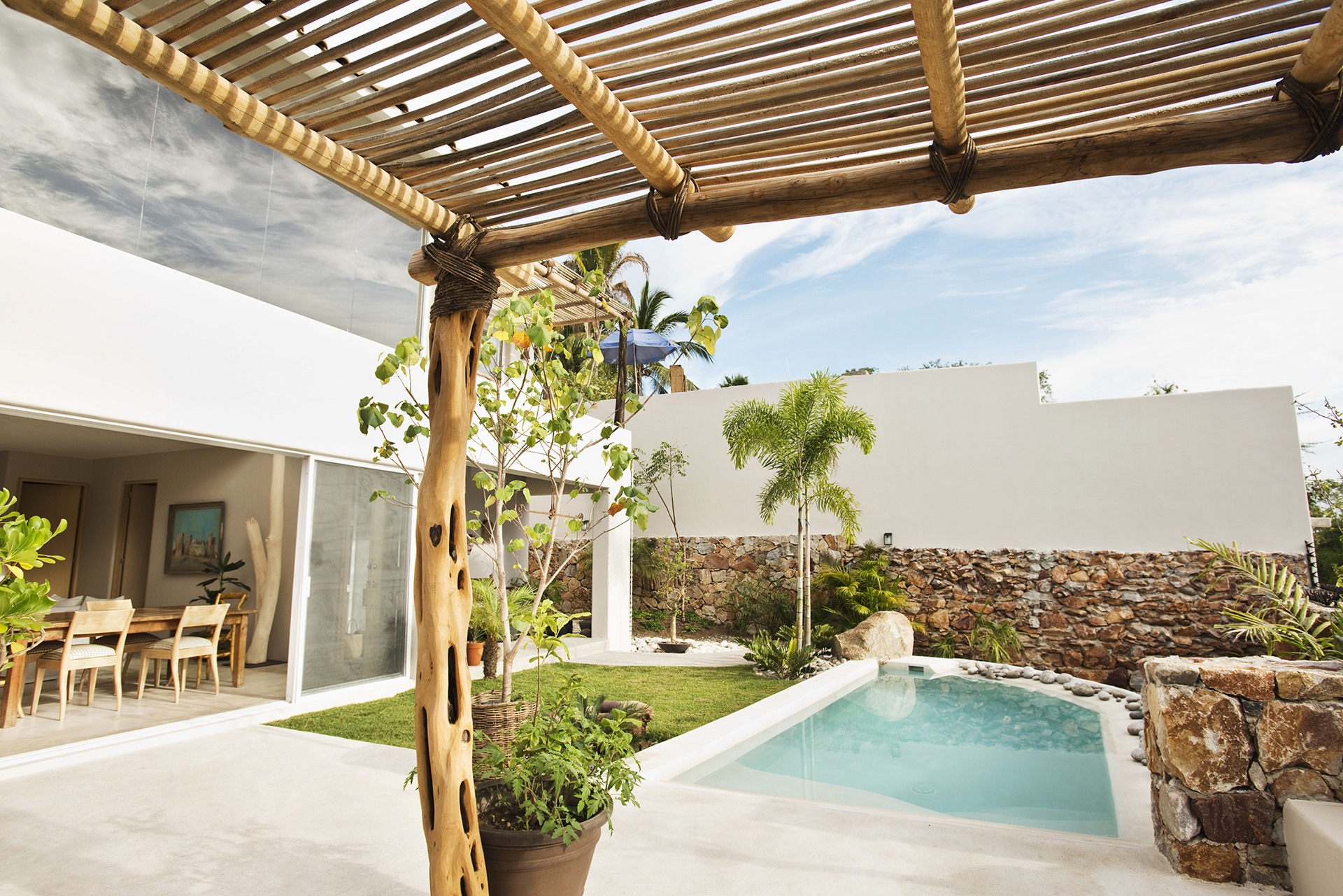

Using baking soda in your pool is one of the easiest but most efficient ways to get your backyard ready for summer. This pool idea is loved by experts who recommend using this homemade remedy to increase the alkalinity and pH level of your pool – and treat black algal growth on your swimming pool wall.
Here's how they recommend using baking soda in your pool – for a simple clean in time for the sunny season ahead.
Why use baking soda in your pool?
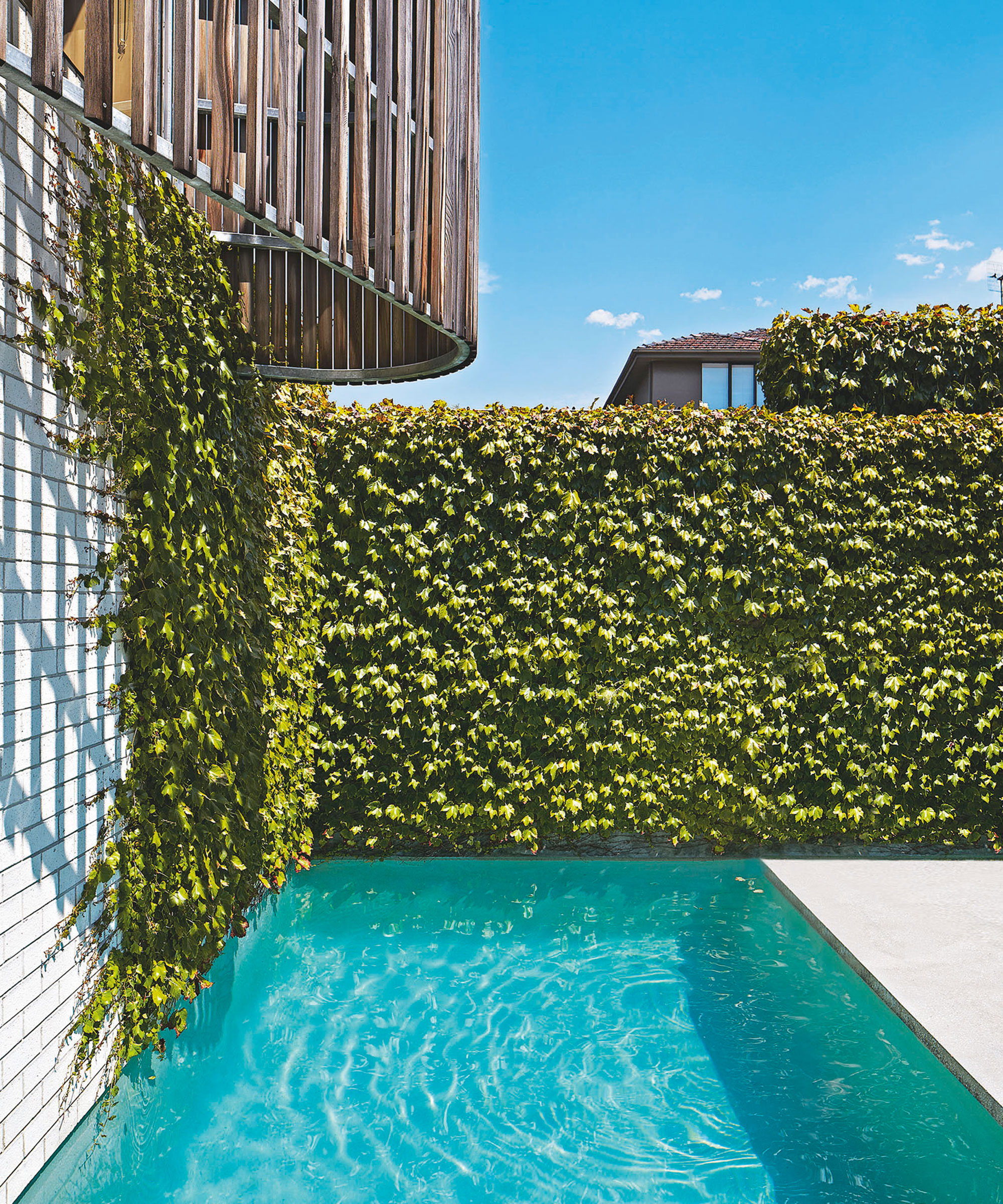
You can use baking soda in a pool for two primary purposes: to increase the alkalinity and pH level for clear water and to cure black algal outbreaks on your wall. The founder of Cleaning Green LLC, Alicia Johnson, explains that baking soda (or sodium bicarbonate) has a pH level of 8, meaning it is a natural alkaline.
'Adding baking soda to your pool will raise both the pH and alkaline level, which will help increase the pool's clarity and improve stability,' she says. Many commercial pool cleaners use baking soda as their main active agent – but you can create a more natural remedy by going to the source of the solution. Here's what you need to know.
Using baking soda in your pool – 3 expert steps to a higher alkalinity and pH level
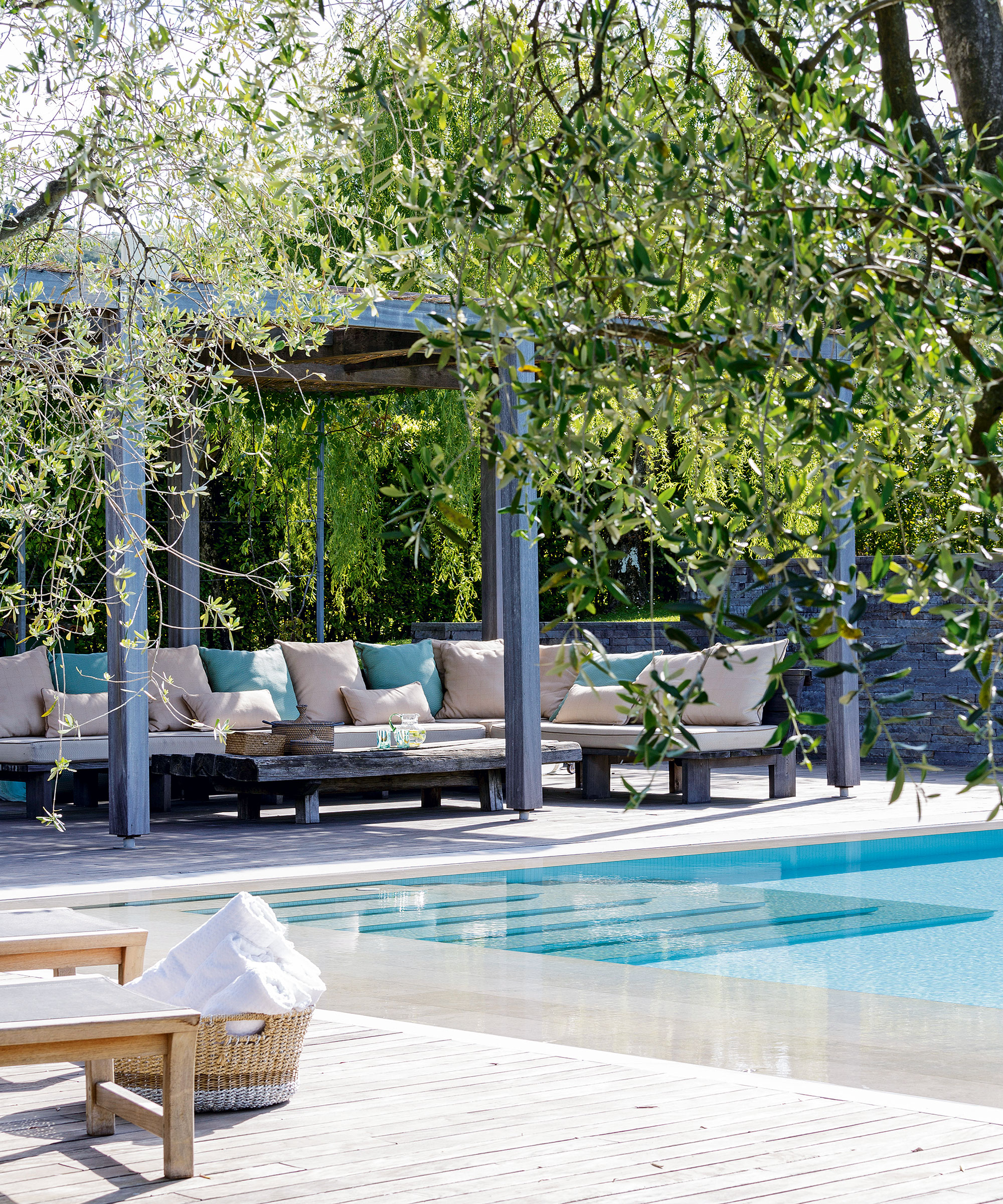
According to Alicia, the ideal pH level of the pool should be between 7.2 and 7.8. Meanwhile, the water's alkalinity should be between 110 and 150 ppm. She suggests buying baking soda in bulk (you can order some here on Amazon) because you may have to use anywhere from 1.5 lbs to 8-10 lbs of this ingredient.
1. Find the appropriate amount of baking soda
When deciding on the right amount of baking soda, Alicia follows a straightforward trick: 'The rule is 1.5 lbs of baking soda per 10,000 gallons of water will raise the ppm by 10,' the expert says.
'We always recommend using less than the calculated amount if you are new to the pool cleaning process since you can always add more after retesting the pool water.'
2. Add the soda to your pool
Once you have found the right amount of baking soda, you should add it to your pool in powder form. 'Make sure you add it to the pool in wide arcs across its surface and don't add it all into one spot,' Alicia says.
3. Wait for the soda to dissolve
You will need to wait 6 hours to let the baking soda thoroughly dissolve into the pool water. However, you can often speed up the process by turning on the pool's circulation system. 'After 6 hours, retest the pool water again, and if the pH and alkalinity levels are still below the recommended range, then repeat the steps,' Alicia adds.
Using baking soda in your pool – to cure black algae on your wall
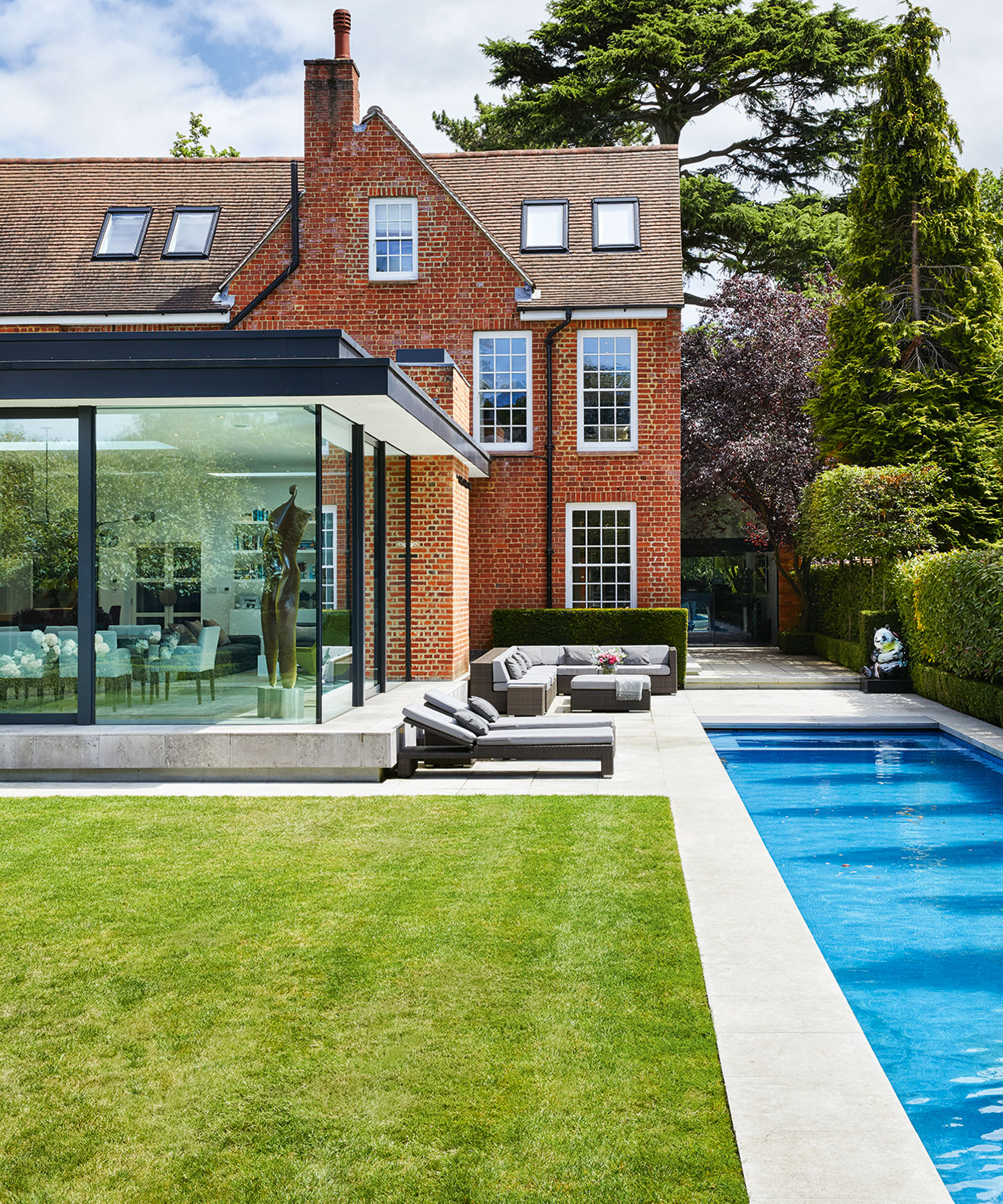
Swimming pools elevate your yard to another level whilst offering respite from the heat in the sunnier months. However, this comes with its cons, too – and this includes algae.
Thankfully, though, you can use baking soda in your pool to cure the black or brown algal areas that may be growing on your wall.
'Algal areas can be effectively treated with baking soda. You only need to sprinkle some of it on the algae-infested areas of your pool,' says Benjamin Stenson, the CEO of Norsemen Home Remodeling.
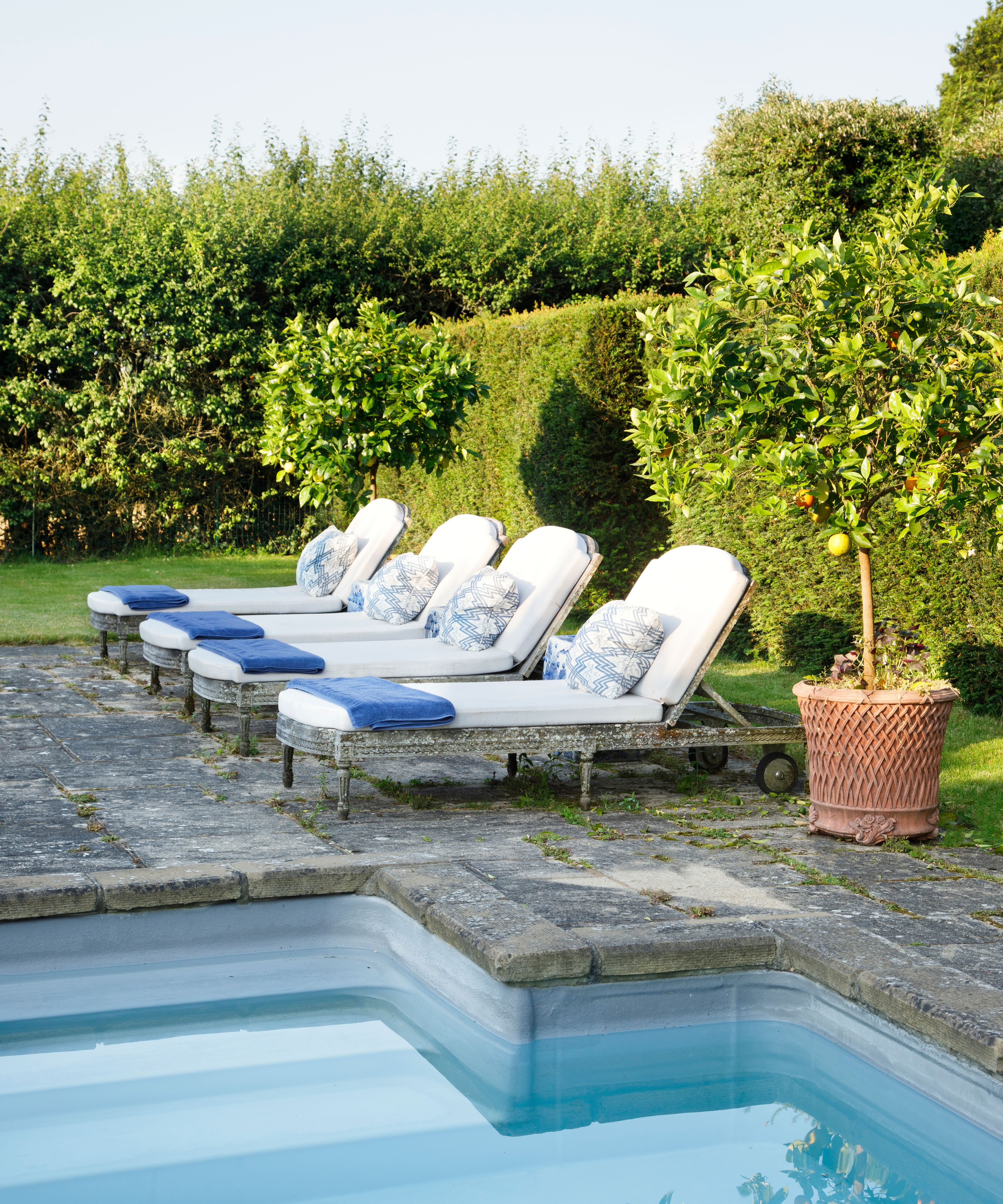
After using baking soda in your pool, you should use your pool brush to remove the algae from the affected area. 'To get the most out of this technique, run the pool through an overnight cycle after treating it with an algaecide,' Benjamin adds.
Sign up to the Homes & Gardens newsletter
Design expertise in your inbox – from inspiring decorating ideas and beautiful celebrity homes to practical gardening advice and shopping round-ups.

Megan is the Head of Celebrity Style News at Homes & Gardens, where she leads the celebrity/ news team. She has a history in interior design, travel, and news journalism, having lived and worked in New York, Paris, and, currently, London. Megan has bylines in Livingetc, The Telegraph, and IRK Magazine, and has interviewed the likes of Drew Barrymore, Ayesha Curry, Michelle Keegan, and Tan France, among others. She lives in a London apartment with her antique typewriter and an eclectic espresso cup collection, and dreams of a Kelly Wearstler-designed home.
-
 Ina Garten's storage pantry is an insightful window into all of the best cookware used by the chef – and it's easy to recreate on your kitchen shelves from $48
Ina Garten's storage pantry is an insightful window into all of the best cookware used by the chef – and it's easy to recreate on your kitchen shelves from $48The beautiful dishware in The Barefoot Contessa's Hamptons pantry showcases the tools she uses most often to cook – this is exactly how you replicate it
By Sophie Edwards Published
-
 Extend the lifespan of your appliance with 5 simple but crucial washing machine maintenance tips
Extend the lifespan of your appliance with 5 simple but crucial washing machine maintenance tipsFrom cleaning the filters to keeping the door open, experts reveal the washer tips they swear by
By Andy van Terheyden Published